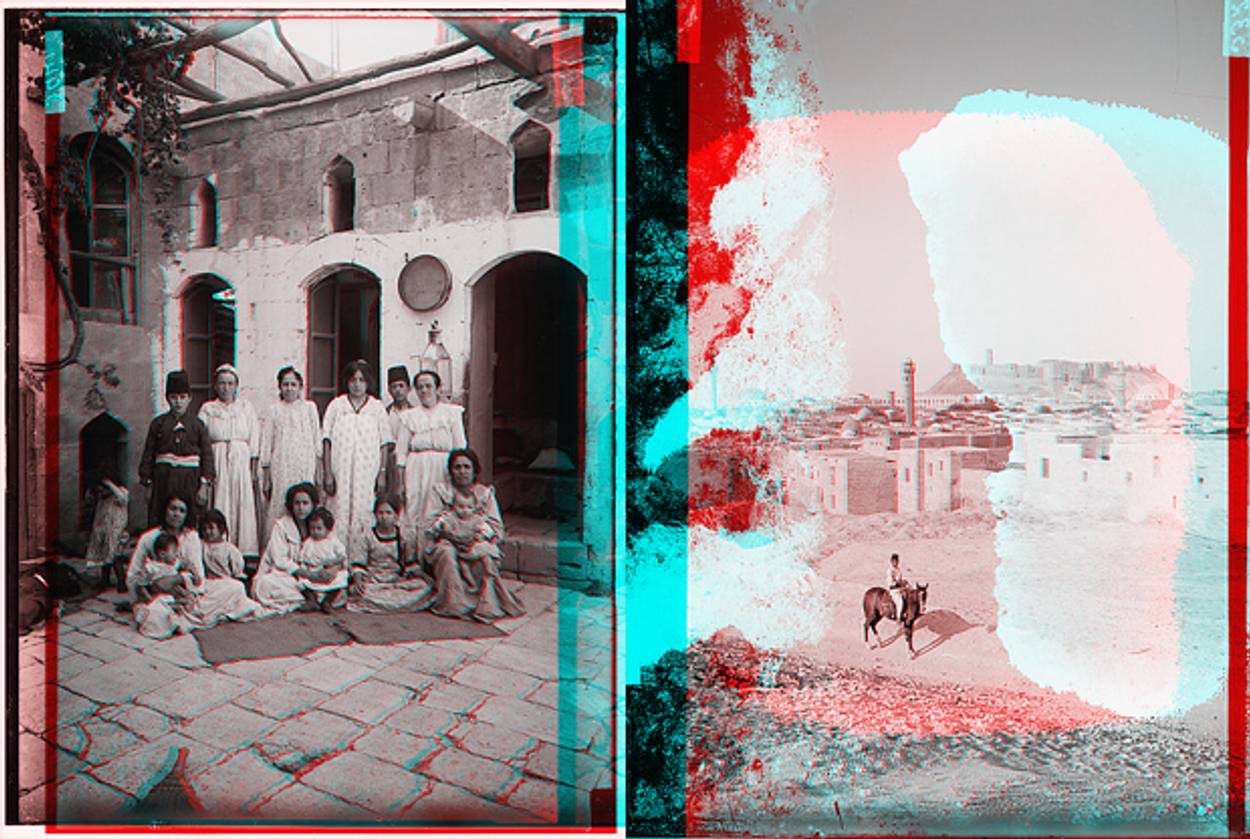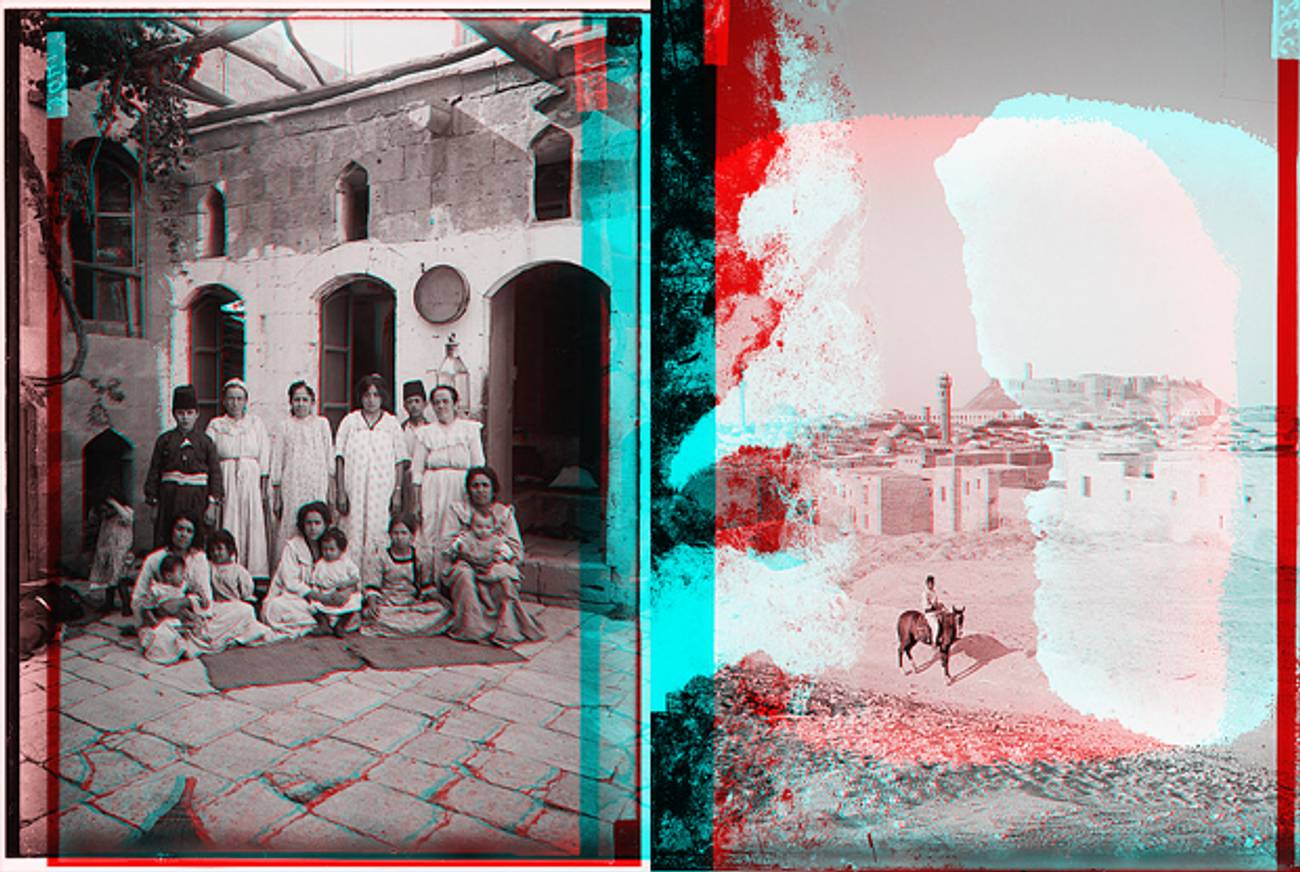Jewish Aleppo, Lost Forever
The Syrian diaspora in Israel watches its once-vibrant ancestral home fall to ruin in the country’s civil war




The northern Syrian city of Aleppo, once a pillar of Jewish existence worldwide, is slowly being destroyed by the fighting that has engulfed Syria for the past 17 months. Last week, a Free Syrian Army rebel warned that soon “there will be nothing left to destroy in Aleppo.” Imagine Rome or Paris destroyed by civil war in the social media age.
Coincidentally, Aleppo had already been in the news thanks to a new book and a lengthy New York Times Magazine article about one of the city’s most famous claims to recognition: the Aleppo Codex of the Hebrew Bible, said to have been complied in Tiberias in the 10th century and ransomed by the Jews of Cairo from the Crusaders after their conquest. After a short but monumental stay in the hands of Maimonides, it wound up in Aleppo, where it was kept hidden in a crypt lining the walls of the city’s great synagogue for the next 600 years. The codex, believed to be the oldest manuscript containing the entire Hebrew Bible, was smuggled out of Syria in the 1950s thanks to the courageous efforts of a handful of Aleppine Jews. Like a segment of Aleppo’s Jewish community, the codex found a home in Jerusalem, where it sits under lock and key at the Israel Museum.
What made Jewish existence in Aleppo so unique and vibrant? For thousands of years, Aleppo was an unofficial capital of the Sephardic Jewish world. Fueled by wealth from international trade and waves of Jewish immigration, the city’s Jews sustained a pious community revered for educational excellence and as a guardian of traditions with roots in ancient Israel. Aleppine folklore—some even say that one of Kind David’s generals personally laid the foundation for its great synagogue, now located at the heart of fighting—hints at the prestige of the city in Jewish history.
But the city is lost, and Jewish existence has been all but erased from its cobbled streets. Remarkably, what has not disappeared is the Aleppine way of life in diaspora communities spanning the globe.
“I would say without any hesitation that the [community of Jews from Aleppo] is the strongest Jewish community in the world in the sense of solidarity,” Yom Tov Assis, a professor of medieval history at the Hebrew University in Jerusalem, told me in his book-saturated office. Assis was born in Aleppo and briefly experienced the violence in the city that accompanied Israel’s independence. He recently founded the center for the study of Aleppine Jewry at the Hebrew University in an effort to preserve and study the traditions of his vibrant community. “There is hardly any Jewish community apart from the Haredim, the ultra-Orthodox, that is so strongly attached to its past and traditions,” he said.
***
Outside of Israel, few cities in the Middle East have a richer history of Jewish cultural activity, education, and trade than Aleppo. Legend has it that the city, which is referred to as Haleb in both Hebrew and Arabic, derives its name from a story of Abraham guiding a flock of sheep through the fleecy shrubbery of the surrounding mountains. He is said to have distributed his sheep’s milk (halev in Hebrew) to the local residents of the city, nestled in Northern Syria’s rolling hills, which thereby was known as Haleb.
Starting in the late 10th century, Aleppo grew to serve as a passageway between the Jewish communities of the Babylonian center and Israel. Its geographic position and impressive sphere of influence bridged the divide from Persia to the lucrative markets of southern Europe. The city held an almost mythic or legendary status among Jews worldwide. Visiting the city in the late 16th century, Italian monk Pietro Della Valle observed in a travel journal that, “Here, in one district [in Aleppo], converges all the Orient, with its jewels, silks, drugs, and cloths; and it is also joined by the Occident, namely France (in force), Venice, Holland, and England.” Aleppine Jews also used their wealth to establish prominent educational institutions and were recognized for their carefully kept traditions in line with the biblical practices of ancient Jews. In a letter to the Jewish community of Lunel in Southern France, Maimonides noted that “in all the Holy Land and in Syria, there is one city alone and it is Halab in which there are those who are truly devoted to the Jewish religion and the study of Torah.”
Historically, Aleppo found itself at the crossroads of two of Jewish history’s major developments: the expulsion of Jews from Spain and the rise of the Zionist movement. As refugees from Iberia flooded the Eastern Mediterranean in the early part of the 16th century, Aleppo became one of the most important centers of absorption. When Aleppo fell under Ottoman rule in the 16th century, the Caliphate maintained a relatively warm relationship with the Jewish community. Provisions ensuring that synagogues were not built taller than mosques and that Jewish religious behavior was performed quietly—part of their status as Dhimmis—meant that Jews found a fragile entente.
In 1947-48, after the United Nations voted to implement a two-state solution in Palestine, anti-Jewish riots broke out in Aleppo. False rumors spread that the codex had been destroyed in an attack. From this point until the late 1980s, the community dismantled itself, and the Aleppine Jewish diaspora began to take shape—mainly in Israel, Brooklyn, and South America. “We used to summer in Lebanon near Beirut,” Assis told me. “One summer my parents rented a large bus with other Jews from Aleppo, and only after we crossed into Lebanon did they inform us that we would never return to Aleppo.”
They were not alone. Some Jews do remain in Muslim countries, from Morocco to Iran. Their numbers, however, are too small to legitimatize the notion that outside of Israel there are still vibrant Jewish communities in the Middle East.
What, then, is the best way to remember Jewish life under Muslim rule in the Middle East? It’s a question that has floated through the halls of Jewish academia for at least 30 years, alternately provoking idealized versions of peaceful life in the Arab world and dramatic tales of persecution. Especially among those dedicated to European Jewish history, which still struggles to understand the tragedy that befell European Jewry in the 20th century, there is a tendency to view life under Muslim rule as exceedingly peaceful, marked by co-existence and even mutual respect. Outside of academia, the question tends to adopt political contours, with people seeking to place blame either on the Zionist movement or the Arab populations that expelled their ancient Jewish communities after the creation of the state of Israel.
Whichever side one falls on politically, it is clear that, for Jews, Aleppo was lost in 1948. The recent destruction of the city’s ancient monuments is merely a reminder of what had already been lost. While the Aleppine community in Israel is not nearly as numerous or powerful as their brethren in Brooklyn—the largest Aleppine Jewish community in the world, covered widely for their financial success and excess—their proximity to Syria and relationship with Jews from other Arab countries give the events in their lost city a more immediate feel.
Like for the Aleppine community in Brooklyn, the idea of Aleppo lives on in schools and synagogues in the exile community in Israel. During our conversation, Assis relayed stories of his adolescence moving around the Middle East. “When I arrived in Beirut and Istanbul, I found myself far more learned than any other kid my age,” he said. “We had a very strong Jewish education, we used to read the Bible and translate it on the spot to the astonishment of our teachers.”
Aleppine synagogues, especially in Israel, have tried hard to protect the unique aspects of their religious observance. On winter Shabbat mornings, tucked deep in the serene streets of Jerusalem’s Nahlot neighborhood, Syrian Jews sing Bakashot, Kabbalistic poetry originating in Spain. The Great Synagogue of the Aleppo Jewish community in Jerusalem, established in 1901, maintains these and other traditions, such as liturgical singing heavily influenced by Arabic, known as the Sephardi Hazanut.
For people like Assis, maintaining this tradition in the face of the winds of history is nothing short of an obligation. “The Jewish world under Islam has vanished,” he said. “You can mourn the whole Jewish world under Islam, there is nothing left. What happens to the cemeteries, to the synagogues, to the books, to everything? Well, God knows.”
***
Like this article? Sign up for our Daily Digest to get Tablet Magazine’s new content in your inbox each morning.
Correction, August 29: Due to reporting and editing errors, a number of inaccuracies appeared in the original version of this text, which has been updated. The Aleppo Codex was compiled in Tiberias, not near it, in the 10th, not the 6th, century. The Codex was not smuggled out of Cairo, nor was it ever in Europe. It is now at the Israel Museum, not the Ben Zvi Institute.
Joseph Dana, Monocle’s former Istanbul bureau chief, is a writer living in South Africa.
Joseph Dana is a writer living in Cape Town, South Africa.